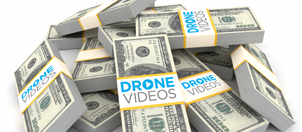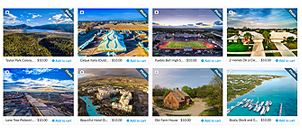Highland Park Shooting Leads Chicago to Loosen Restrictions on Police Drone Flights

Sixteen months ago, a gunman armed with an assault rifle shot and killed seven people and wounded 30 others at the annual July 4th parade in Highland Park outside Chicago. It was one of the worst mass shootings in the U.S. in recent years but it could have been even worse. Operating from a nearby rooftop, the shooter escaped detection and managed to flee the scene. Thanks to an alert citizen, police were eventually tipped off to the man’s whereabouts, which allowed them to capture him before he possibly attacked again. But for eight grueling hours, residents of Chicago and the surrounding area remained in a state of near-panic.
In the aftermath of the incident, police noted that the city’s strict drone policy – which prevented police overflights of mass gatherings of any kind – had hampered their ability to respond promptly to the shooting, which might have limited the carnage and kept parade participants in a zone of safety.
Since then, thanks to growing public pressure, and amid fears of possible future attacks, Illinois has decided to act. Police agencies in the state are now authorized to fly over mass gatherings, which include parades and other “government-hosted” events. While some citizens are still concerned over possible police abuse of drones for the purpose of monitoring demonstrations and civic protests, the state insists that such activities are expressly prohibited, just as they were under its previous guidelines.
In fact, public support for the new legislation is widespread. The bill authorizing expanded overflights passed the state assembly and senate overwhelmingly in early June and was signed into law by the governor in late July. The bill, known as H.R 3902, amends the ten-year-old Freedom from Drone Surveillance Act which had prevented law enforcement from flying over outdoor gatherings of any kind, regardless of the public safety issues involved.
Henceforth, Illinois police agencies will be allowed to deploy drones at “routed” or “special” events, which includes parades, walks, races, concerts and even food festivals, but the bill does not permit flights over private events or even public ones below a minimum attendance threshold.
The ACLU and privacy advocates normally critical of expanded police drone powers in Illinois and elsewhere have supported the new legislation, with some amendments, most of which were included in the final version of the bill.
“It has been so clear to me that we needed to give the police just this one additional tool to keep people safe,” Democratic state Sen. Julie Morrison, a frequent police critic, said as the bill came up for consideration.
Morrison was among several members of the assembly who were directly affected by the mass shooting. Her district includes Highland Park and in fact, she was attending the 2022 Fourth of July parade with her husband and children when the shooter began firing at participants, leaving her entire family terrified.
Chicago is not alone in moving to loosen restrictions on drone overflights of public assemblies. In recent months, as violent crime has spiked in a number of U.S. cities, some law enforcement agencies have begun using their drones to monitor large and even small gatherings – including backyard barbecues and wedding parties – if circumstances appear to warrant it. Not all of these initiatives have been formally sanctioned by law.
In New York, Mayor Eric Adams’ decision to allow for expanded drone surveillance of public and even private gatherings over Labor Day caused an uproar, including formal complaints from the ACLU and other privacy groups who complain that the city is overreaching its authority.
In response, Adams has reassured New Yorkers that NYPD overflights will be limited to holidays when public parades and even private events can sometimes spiral out of control, leading to violence. He points to the city’s 2021 law, known as the Public Oversight of Surveillance Technology (POST) Act, which establishes broad guidelines for drone overflights by the NYPD, as sufficient justification for expanded aerial surveillance. In theory, under POST guidelines, a 911 call or a specific citizen complaint is needed to trigger a drone deployment, but critics say the planned overflights are unduly provocative and should still be scaled back.
The Illinois law includes a number of additional citizen protection provisions not seen elsewhere. For example, it authorizes the state attorney general to look into complaints about police drone use and to back up its investigation with a court order, if needed. Local departments that violate state restrictions can lose their authority to operate drones for six months for the first offense, and up to one year for subsequent violations.
Even without new legislation, a growing number of U.S. police agencies are taking additional steps to allay public concerns about potential police abuses of citizen privacy. For example, most have banned the use of facial recognition technology as well as the use of drone surveillance footage for anything other than criminal investigation and prosecution. Some agencies have even allowed the public to monitor their drone overflights in real time, or to review drone footage on police websites.
Last month in Bend, OR, representatives from 70 different police agencies converged at the annual meeting of the Law Enforcement Drone Association (LEDA) to discuss the development of uniform rules for drone use in a host of law enforcement missions, including search-and-rescue, criminal pursuit, crime scene analysis, mass shooter response and special aerial surveillance operations like crowd monitoring.
By implementing national standards, LEDA officials hope to make it easier for law enforcement agencies to expand their drone programs while reducing the possibility of friction and misunderstanding between police and the communities they serve over the scope and purpose of drone policing.
“If we can continually train police agencies to adopt the standards we are pushing for, you’re going to see a massive de-escalation [of violence] across the nation with the widespread adoption of drone technology,” says Johnathan Neal, LEDA’s president who helped organize this year’s conference.
LEDA officials acknowledge that not all police agencies are fully on board. Many agencies would like to be free to adapt and expand their tactical use of drones in response to unforeseen circumstances, based on their day-to-day crime-fighting needs, rather than waiting for an official sign-off each time they need to deploy.
But LEDA says it hopes that the adoption of more uniform drone deployment protocols can defuse citizen concerns about “rogue” police action and will allow for broader acceptance of expanded drone use.
“The most important thing is getting public acceptance from your community. You have to have that public buy-in to build confidence in your drone program,” says Mark Colborn, a former Dallas police helicopter and drone operator and a senior LEDA consultant.
Currently, about 1,500 U.S. police departments have adopted drone programs, about 8% of the nation’s total. The Lake County Sheriff’s office and two surrounding county sheriff’s offices have roughly 20 drones at their disposal combined, with more on the way. Overall, Illinois ranks third after California and Texas with well over 80 local departments deploying drones, according to the Center for the Study of the Drone at Bard College in New York.
|
Previous Drone News:
« Drones Can Detect Methane Emissions in the Fight Against Global Warming
Israel’s Agriculture Drone Expertise is Spreading Worldwide »



